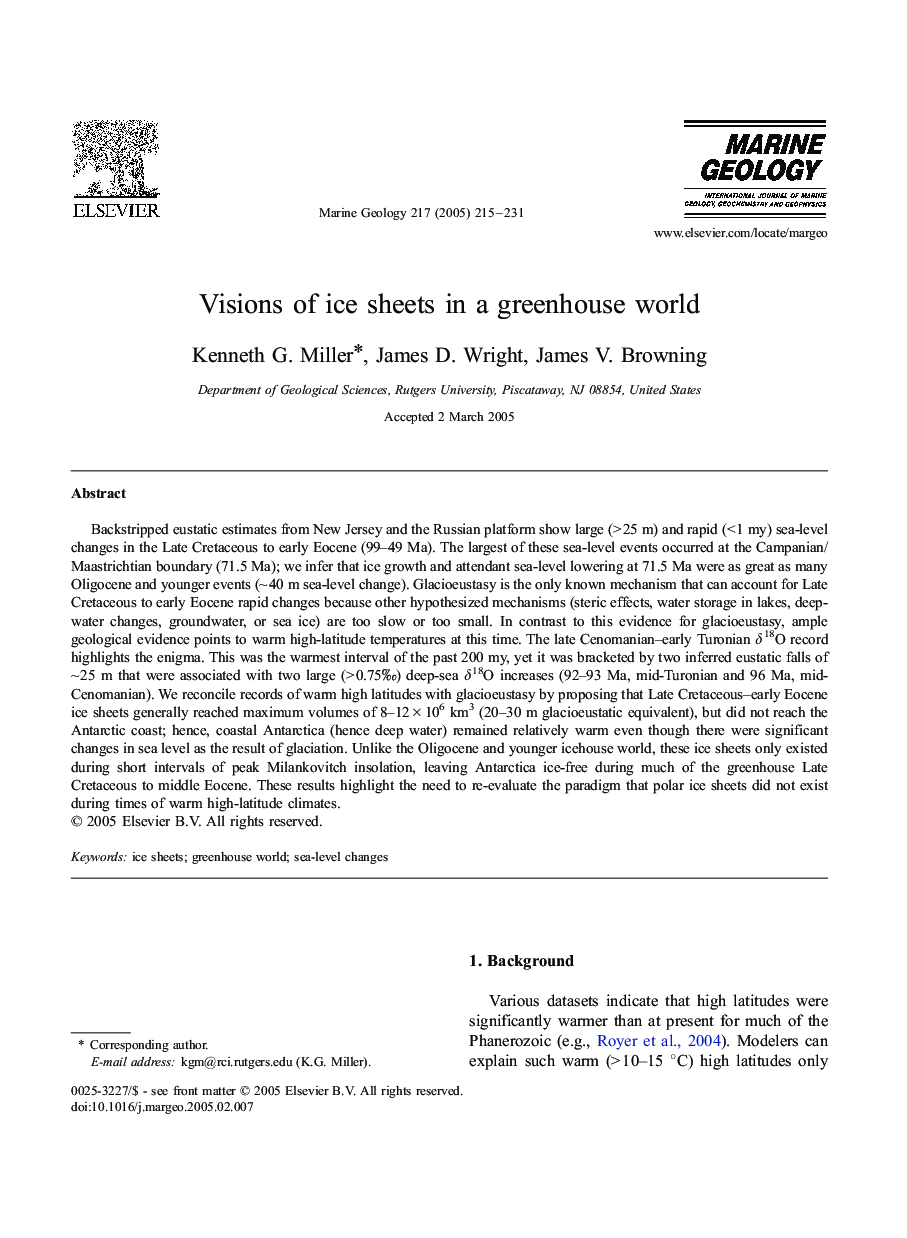| Article ID | Journal | Published Year | Pages | File Type |
|---|---|---|---|---|
| 9532496 | Marine Geology | 2005 | 17 Pages |
Abstract
Backstripped eustatic estimates from New Jersey and the Russian platform show large (> 25 m) and rapid (< 1 my) sea-level changes in the Late Cretaceous to early Eocene (99-49 Ma). The largest of these sea-level events occurred at the Campanian/Maastrichtian boundary (71.5 Ma); we infer that ice growth and attendant sea-level lowering at 71.5 Ma were as great as many Oligocene and younger events (â¼Â 40 m sea-level change). Glacioeustasy is the only known mechanism that can account for Late Cretaceous to early Eocene rapid changes because other hypothesized mechanisms (steric effects, water storage in lakes, deep-water changes, groundwater, or sea ice) are too slow or too small. In contrast to this evidence for glacioeustasy, ample geological evidence points to warm high-latitude temperatures at this time. The late Cenomanian-early Turonian δ18O record highlights the enigma. This was the warmest interval of the past 200 my, yet it was bracketed by two inferred eustatic falls of â¼Â 25 m that were associated with two large (> 0.75â°) deep-sea δ18O increases (92-93 Ma, mid-Turonian and 96 Ma, mid-Cenomanian). We reconcile records of warm high latitudes with glacioeustasy by proposing that Late Cretaceous-early Eocene ice sheets generally reached maximum volumes of 8-12 Ã 106 km3 (20-30 m glacioeustatic equivalent), but did not reach the Antarctic coast; hence, coastal Antarctica (hence deep water) remained relatively warm even though there were significant changes in sea level as the result of glaciation. Unlike the Oligocene and younger icehouse world, these ice sheets only existed during short intervals of peak Milankovitch insolation, leaving Antarctica ice-free during much of the greenhouse Late Cretaceous to middle Eocene. These results highlight the need to re-evaluate the paradigm that polar ice sheets did not exist during times of warm high-latitude climates.
Keywords
Related Topics
Physical Sciences and Engineering
Earth and Planetary Sciences
Geochemistry and Petrology
Authors
Kenneth G. Miller, James D. Wright, James V. Browning,
